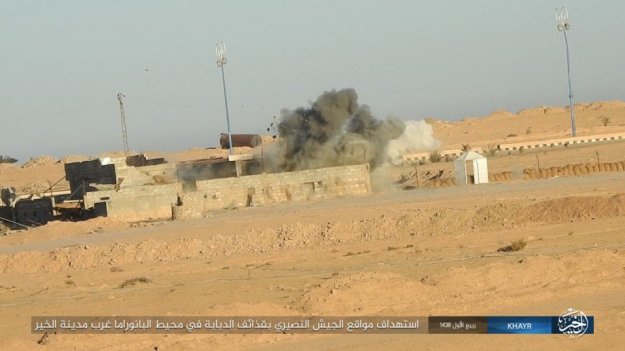By Kyle Orton (@KyleWOrton) on January 28, 2017

A joint American-Iraqi raid killed Ahmad al-Ubaydi (Abu Suhayb), the Islamic State of Iraq’s Northern Commander, on 19 April 2010, a follow-up raid after ISI’s emirs had been killed the day before. Al-Ubaydi’s death, and the many other ISI leaders picked off before and after him, seemed at the time to presage ISI’s downfall. Instead, ISI was just about to become more powerful than ever.
Al-Ubaydi, whose full name is Ahmad Ali Abbas Dahir al-Ubaydi, was struck down near Mosul. He had been in charge of what ISI designated as the northern zone—the provinces of Ninawa, Saladin, and Kirkuk. Al-Ubaydi “was the guy in charge of [ISI military] operations from Tikrit all the way up to Mosul out to the Syrian border,” General Ray Odierno, the top U.S. commander in Iraq, told reporters.
ISI’s emir, Hamid al-Zawi (Abu Umar al-Baghdadi), and his deputy, Abdul Munim al-Badawi (Abu Hamza al-Muhajir), were killed on 18 April, and eight raids were carried out that night using (p. 623) the captured intelligence. It was using this trove of intelligence that al-Ubayd was tracked down, according to Gen. Odierno.
As northern emir, al-Ubaydi had taken over directly from Khalid Muhammad Hasan Shallub al-Jiburi, who was killed on 18 March 2010; al-Jiburi had replaced Abu Naim al-Afri, who was killed on 5 January 2010. It was ISI’s most important military position, and had involved, in the case of Mohamed Moumou (Abu Qaswara), in office between June 2007 and October 2008, significant administrative and financial responsibilities, too. There was some re-organization after Moumou’s downfall, so it is likely al-Ubaydi did not have quite so much power concentrated in his hands, but he was nonetheless a Tier One operative of ISI.
ISI’s leadership was under tremendous pressure in the lead up to al-Ubaydi being killed.
Saad al-Shammari (Abu Khalaf), ISI’s leading facilitator for foreign fighters, was killed on 22 January 2010. Al-Shammari was—of course—based in Syria, and was killed after venturing into Iraq. The Syrian government of Bashar al-Assad had supported ISI in Iraq from before the Iraq invasion even began until at least 2012, and even after that manipulated ISI within Syria for its own ends in defeating the rebellion. Al-Shammari had replaced Badran al-Mazidi (Abu Ghadiya), whom the U.S. killed in a raid into Deir Ezzor in October 2008 after repeated requests for Assad to shut down al-Mazidi’s network—which was both overseen and penetrated by Assad’s military-intelligence—were refused.
The evidence taken from the raid against al-Shammari implicated him in the bombings in Baghdad, beginning in August 2009, which that crippled the government’s functioning. Those attacks were planned directly at a meeting in Zabadani, near Damascus, between Bashar al-Assad’s intelligence services, elements of the fallen Saddam Husayn regime, and ISI. The al-Shammari files led to Manaf al-Rawi, the emir of Baghdad and tactical leader of those operations. Al-Rawi was arrested on 11 March 2010, providing a trail that ultimately led to al-Zawi and al-Badawi.
In parallel, ISI’s infrastructure in Mosul, its only remaining secure environment where income exceeded expenditure, was being hammered. On 23 March 2010, ISI’s economic security emir, Abu Ahmad al-Afri (Abu Marwa) was killed. A day later, 24 March, Bashar Khalaf Husayn Ali al-Jiburi (Dhafir, Abu Huda), ISI’s overall emir of Mosul, a man “heavily involved in coordinating and approving attacks and assassinations, many of which were related to [ISI’s] extortion operations,” was killed, and three senior “extortion personalities”—the oil minister, his deputy, and the oil extortion leader for Mosul—were arrested. Bashar al-Jiburi’s replacement was arrested on 6 April.
The U.S. announced on 4 June 2010 that thirty-four of forty-two ISI leaders—fully eighty-percent—had been taken off the battlefield over the preceding three months, and that they believed ISI’s connection to al-Qaeda’s central leadership in Pakistan was broken (a whole separate can of worms).
Subsequent to al-Ubaydi’s death, the ISI emir for Anbar Province, Mahmud Sulayman, was captured on 23 April 2010, and on 3 May Abu Abdallah al-Shafi’i, the leader of Ansar al-Islam, was also rounded up.
It should be noted that for all this, ISI was rebuilding in this period and responding (successfully) to the Surge-and-Sahwa. The new emir, Ibrahim al-Badri (Abu Bakr al-Baghdadi), quickly picked up where al-Zawi had left off—indeed would name many operations in the second half of 2010 after al-Zawi—with an expansion of military operations, while consolidating his own internal position by eliminating ISI cells suspected of disloyalty. ISI’s assassins were also cutting down the Awakening militiamen, Iraqi Islamic Party officials, and other opponents for Sunni allegiance at a ferocious pace. The U.S. political and then military withdrawal gave free-reign to the worst sectarian and authoritarian instincts of Iraqi Prime Minister Nuri al-Maliki, and increased Iran’s influence in Baghdad, providing ISI further political space. By mid-2011, ISI was expanding its reach not only in Iraq but also in Syria.
Pingback: A Turncoat Still Loved By the Islamic State: Manaf al-Rawi | The Syrian Intifada
Pingback: The Islamic State Explains Its Secret To Success | The Syrian Intifada
Pingback: Analysis: ‘Signs of Recovery for the Islamic State’ | The Counter Jihad Report
Pingback: Testimony of Abu Ahmad: An Islamic State Defector | The Syrian Intifada
Pingback: Islamic State Officially Gives Up the Caliphate, Returns to Insurgency | The Syrian Intifada
Pingback: Signs of Recovery for the Islamic State | The Syrian Intifada
Pingback: Don’t Celebrate the Fall of Raqqa Just Yet | The Syrian Intifada
Pingback: Islamic State Officially Gives Up the Caliphate, Returns to Insurgency | Kyle Orton's Blog